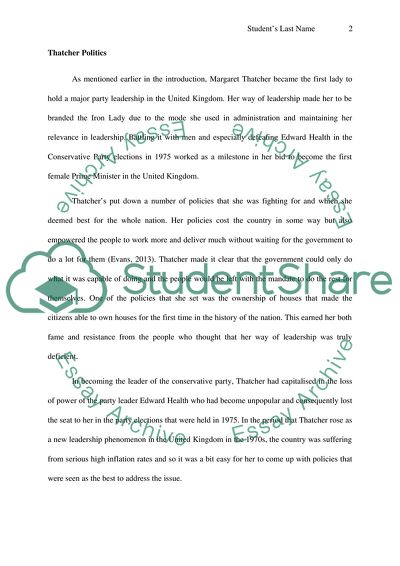Cite this document
(“How did Margaret Thatcher become leader of the Conservative party Why Essay”, n.d.)
How did Margaret Thatcher become leader of the Conservative party Why Essay. Retrieved from https://studentshare.org/social-science/1652484-how-did-margaret-thatcher-become-leader-of-the-conservative-party-why-was-she-able-to-remain-as-the-partys-leader-for-fifteen-years
How did Margaret Thatcher become leader of the Conservative party Why Essay. Retrieved from https://studentshare.org/social-science/1652484-how-did-margaret-thatcher-become-leader-of-the-conservative-party-why-was-she-able-to-remain-as-the-partys-leader-for-fifteen-years
(How Did Margaret Thatcher Become Leader of the Conservative Party Why Essay)
How Did Margaret Thatcher Become Leader of the Conservative Party Why Essay. https://studentshare.org/social-science/1652484-how-did-margaret-thatcher-become-leader-of-the-conservative-party-why-was-she-able-to-remain-as-the-partys-leader-for-fifteen-years.
How Did Margaret Thatcher Become Leader of the Conservative Party Why Essay. https://studentshare.org/social-science/1652484-how-did-margaret-thatcher-become-leader-of-the-conservative-party-why-was-she-able-to-remain-as-the-partys-leader-for-fifteen-years.
“How Did Margaret Thatcher Become Leader of the Conservative Party Why Essay”, n.d. https://studentshare.org/social-science/1652484-how-did-margaret-thatcher-become-leader-of-the-conservative-party-why-was-she-able-to-remain-as-the-partys-leader-for-fifteen-years.


